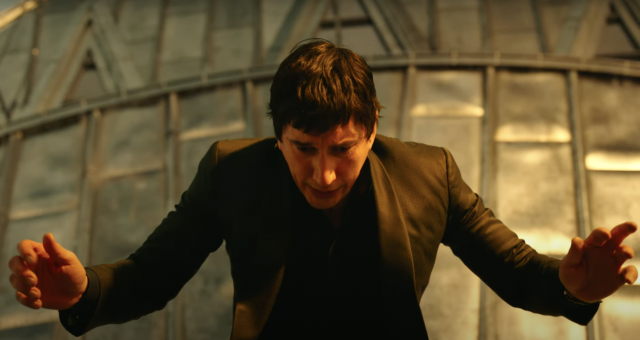In the realm of filmmaking, the intersection of art and reality often presents filmmakers with profound ethical dilemmas. Such is the case with Francis Ford Coppola’s highly anticipated sci-fi epic, “Megalopolis,” which finds itself at the center of controversy over the inclusion of real-world footage from the 9/11 disaster.
Coppola’s journey to bring “Megalopolis” to the screen has been long and arduous, spanning decades of development and production hurdles. The film, which follows architect Cesar (portrayed by Adam Driver) as he envisions a utopian future for his city in the wake of a catastrophic event, has been a passion project for Coppola since the early 1990s. However, setbacks and delays, including Coppola’s decision to shelve the project after the events of September 11, 2001, have kept “Megalopolis” from reaching fruition until now.
As the film finally nears its premiere at the Cannes Film Festival, Coppola’s revelation that footage of the 9/11 disaster may be incorporated into “Megalopolis” has sparked intense debate and scrutiny. The prospect of using real-world tragedy as a narrative device raises complex questions about artistic integrity, sensitivity, and the ethical responsibilities of filmmakers.
On one hand, Coppola’s intention to capture the vibrancy of New York City with documentary-style footage is understandable from a creative standpoint. However, the unforeseen convergence of this footage with one of the most devastating events in modern history presents a moral quandary. How can Coppola navigate the delicate balance between artistic expression and respectful remembrance?
FAQs
Why is the inclusion of real-world footage in “Megalopolis” controversial?
The controversy stems from the ethical implications of using footage from the 9/11 disaster, a tragedy that continues to evoke deep emotions and sensitivities worldwide. Critics argue that such footage risks trivializing or exploiting the profound suffering and loss experienced by those directly affected by the tragedy.
What challenges does Francis Ford Coppola face in incorporating real-world footage into his film?
Coppola must navigate a delicate balance between artistic expression and ethical responsibility. He must ensure that the footage is treated with reverence and sensitivity, avoiding any semblance of sensationalism or insensitivity. Additionally, he must contend with heightened scrutiny from audiences, critics, and cultural commentators.
How can real-world footage enhance the artistic impact of “Megalopolis”?
When handled with care, real-world footage can imbue the film with thematic resonance and evoke a profound emotional response from audiences. By contextualizing the footage within the narrative framework of “Megalopolis” and exploring universal themes of resilience and unity, Coppola has the opportunity to create a work of art that resonates deeply with viewers.
What is the significance of “Megalopolis” premiering at the Cannes Film Festival?
The Cannes Film Festival is one of the most prestigious events in the film industry, providing a platform for filmmakers to showcase their work to a global audience and receive critical acclaim. “Megalopolis” premiering at Cannes underscores its significance as a major cinematic event and highlights the cultural and artistic importance of the film.
How has Francis Ford Coppola addressed concerns about the use of real-world footage in “Megalopolis”?
Coppola has emphasized his intention to treat the footage with the utmost respect and sensitivity, acknowledging the gravity of the events depicted. He has expressed his hope that the inclusion of real-world footage will contribute to the film’s thematic exploration of resilience and renewal, rather than detract from it.
